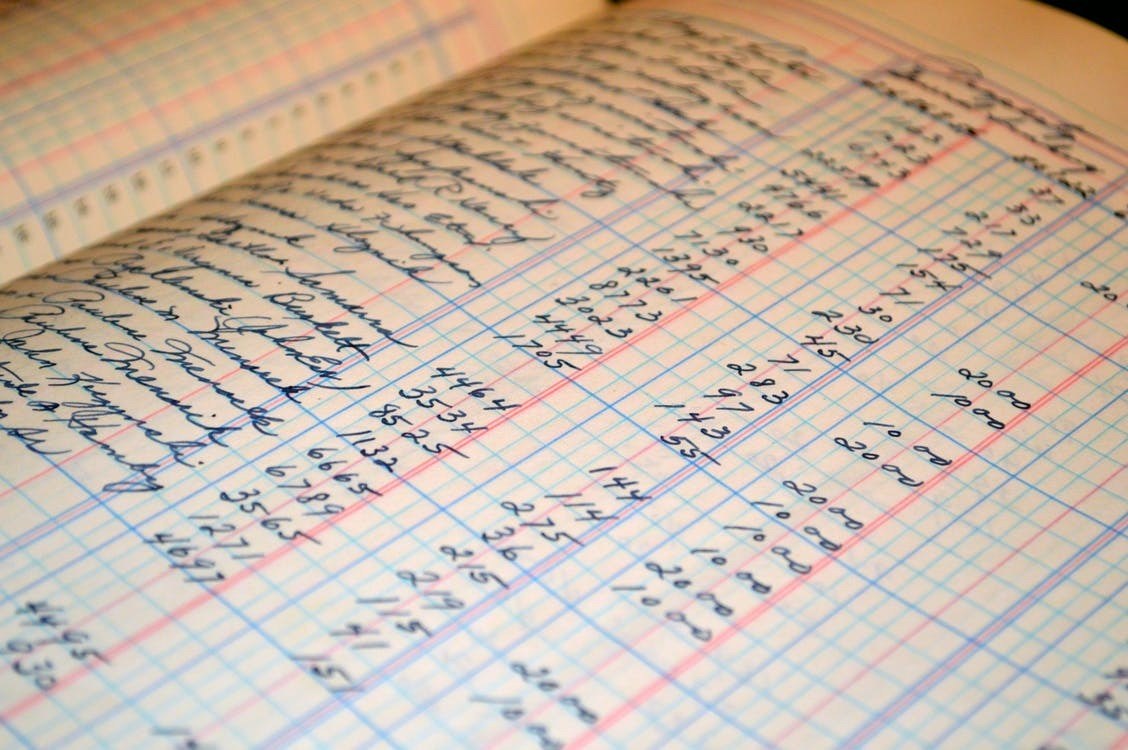- Home »
- Investing in Distressed Businesses »
- Finding Truth in a Debtor’s Balance Sheet: Analyzing Assets, Liabilities, and Equity

Finding Truth in a Debtor’s Balance Sheet: Analyzing Assets, Liabilities, and Equity
How to Read a Balance Sheet Beyond Surface Level
A balance sheet provides a snapshot of a company’s financial condition as of a specific date by presenting three components: assets, liabilities and equity. While a balance sheet may help its user to evaluate a company for stability, investment potential, and creditworthiness, it should not be accepted without question. Balance sheets omit possibly important information, and the information that is presented may obscure issues beneath the surface. Investing time and asking the right questions before a deal is done will give the user an appreciation of what is not there, along with what is not quite there, and should help guide further review of the company’s condition and prospects.
To help balance sheet users dispel the murkiness, let’s review how to read a balance sheet, the components presented on a balance sheet, certain limitations of that presentation, and what information cannot be found on a balance sheet at all. The points of emphasis are illustrated by real-life examples.
Understanding the Components: Assets, Liabilities, and Equity
First, let’s examine a sample balance sheet to understand what information it contains:
| ($ in 1,000s) | 12/31/23 | |
| Assets | ||
| Cash and equivalents | $ 100 | |
| Accounts receivable | 250 | |
| Inventory | 300 | |
| Land and buildings (at cost) | 1,200 | |
| Furniture, fixtures, and equipment | 125 | |
| Notes receivable, net | 825 | |
| Property and equipment, net | 175 | |
| Total Assets | 2,975 | |
| Liabilities | ||
| Accounts payable and accrued expenses | 250 | |
| Notes payable | 1,000 | |
| Notes payable to affiliates | 375 | |
| Lines of credit | 225 | |
| Taxes payable | 125 | |
| Total Liabilities | 1,975 | |
| Owner’s Equity | 1,000 | |
| Total Liabilities and Owner’s Equity | $ 2,975 |
The three principal components of a balance sheet are assets, liabilities, and equity. Together, the monetary amount of liabilities and owner’s equity will equal the monetary amount of assets, creating the “balance.”
The assets are listed, moving downward, in the order of their ease of liquidation. Cash is already liquid, accounts receivable are more liquid than inventory, and so on. Assets and liabilities are determinable values, meaning they are subject to measurement and calculation. In the example balance sheet there is $100,000 in cash in a bank on Dec. 31, 2023. Other values, such as the purchase price of land and buildings, as well as the level of the notes receivable and notes payable, are similarly fixed.
As the values of the assets and liabilities fluctuate, so does the value of the business as a whole. For example, if the company is able to convert $100 in inventory into $120 in cash, the $20 gross profit from that transaction will be reflected in a corresponding increase in the owner’s equity. Owner’s equity thus represents the aggregate effect of transactions from the business’ inception through the statement date.
The values stated on a balance sheet are the book values according to U.S. generally accepted accounting principles (GAAP). Book values are not necessarily equal to fair market value (FMV). For example, the sum of the price of a parcel of land plus the cost to build the structure on it (the book value under GAAP) is not necessarily (or even likely to be) equal to the market price to purchase the combined finished product at any given time (the FMV).
It follows that a user of the example balance sheet would be mistaken in thinking that the entity’s current market value is $1,000,000, or the owner’s equity value. A balance sheet is not a valuation tool, and by itself it cannot accurately measure an entity’s value.
The Untold Stories of the Balance Sheet
Users who accept at face value the information presented on a balance sheet invite surprise and even peril. Understanding how to read a balance sheet is more than knowing what assets, liabilities, and equity mean, but also knowing the subtext of those components.
As the following real-life examples demonstrate, truths can hide behind categories of assets presented on a balance sheet. Remember that assets are listed in the order of ease of liquidation, so at least the first few should—in theory—dependably reflect.
Cash
Cash would appear to be the most dependable value on the balance sheet. But is the cash actually available to the company? For example, taxes withheld from payroll checks (much of the difference between an employee’s salary and the amount he or she receives) between the date the checks are prepared and the date the funds are transferred to the respective federal agencies are held in trust by the company for those taxing entities and are no longer available to the company. The balance sheet would not show this distinction.
One client used its payroll tax trust fund cash (held in a separate account before being sent to tax authorities) as a short-term interest-free loan to fund operational losses. Dipping into these accounts entails terrible risks, including personal liability for the officers of the company. Sometimes when a cash-strapped company cannot fund the entire payroll, it will issue payroll checks paying employees their portion of their wages but not set aside the funds owed to benefit and tax entities. This failure to reserve for these obligations similarly endangers the responsible officers with personal liability.
In addition, some cash that looks good on a balance sheet may be pledged as security on a loan (making it restricted cash). While certain receipts may be directed immediately to an account owned by the lender and so would not show up as cash, such immediate redirection might be impossible for other receipts (for example, proceeds from certain receivables from federal agencies). A balance sheet user must verify that the cash on the balance sheet is truly unencumbered and not subject to third parties’ claims.
Accounts Receivable
Accounts receivable represent money due typically from the company’s customers for services performed or merchandise sold on credit. They should be collectible and stated on the balance sheet net of appropriate discounts. Users must ask whether management has reduced the face value of the accounts receivable appropriately and whether the accounts receivable items on the balance sheet are truly collectible.
An investor can evaluate collectability by analyzing (among other things) the diversity of the customers, customer financial health, and changes to accounts receivable aging reports over time. Lack of collectability can drive down the actual value of accounts receivable. Perhaps, for example, there are receivables due from defunct or troubled entities, or from insiders or affiliates of the company (which in some cases might rely on funding from the company itself to pay such receivables).
A troubling example involves a company with a large amount of accounts receivable due from various medical insurance companies. Medical care providers and insurers negotiate over the fee to be paid to the providers (often resulting in a significant discount from the uninsured rate).
Further, pre-authorization of coverage can disclose whether the insurance company will pay anything at all (there are possible policy exclusions or limitations, e.g., limitations to a single physical medical exam per year). The company in the example did not adjust the accounts receivable to a collectible level and instead listed them at face value. The investor in the company failed to explore this potential discrepancy and was disappointed in what turned out to be nearly uncollectible accounts receivable.
Another example: it was alleged to a company’s customer that the amounts billed by the company were fraudulent. Understandably, such allegations caused delayed payment from that customer and potentially indefinite withholding of payment. An investor or lender who does not know of such problems would face an unpleasant cash flow surprise. To the extent a company relies on collection of accounts receivable to fund operations (which is quite common), a significant collection delay might threaten its very survival.
Consignment arrangements can give impersonate accounts receivable – so it may pay to determine whether the company operates in an industry that uses consignment sales. Consignments are sometimes erroneously listed as accounts receivable even when nothing is sold and no payment obligation has arisen in favor of the company. In a consignment scenario, the company as owner of the goods would turn them over to a consignee, which would sell them to a customer. The company would acquire a right to payment from the consignee only when the goods are subsequently sold. The company would acquire no right to payment simply because the items were placed into consignment; the goods could be returned unsold to the company.
Inventory
Inventory includes raw materials and items available for sale or in the process of being made ready for sale. Inventory is thought of as product for sale, with a value that is readily and reasonably quickly convertible to cash. But that isn’t necessarily so. One company, for example, was involved in the repair of 10-year-old used laptop computers. Its inventory—computer parts—was valuable because their availability in the marketplace was limited. However, demand for the parts also was limited and unpredictable (projecting the future demand for laptop repairs is difficult). That example helps illustrate why, in regarding the stated value of inventory on a balance sheet, one should consider the nature of the inventory. Consumer technology items, for example, can quickly lose value or even become obsolete. A game changing innovation might render a Commodore 64 or beeper valueless except to a tech museum.
Under some circumstances, inventory also can be configured in ways that create illusory value. For example, plants are priced based on the size of the pots they are rooted in. A company with inventory composed of plants could theoretically inflate the value of the inventory by simply placing the plants into larger pots. The effects of placing the same plants into larger pots can be worsened if the demand for large plants declines relative to the demand for smaller plants. Again, a look behind the numbers can clear up obscurity.
Land and Buildings
The value of the land and buildings item on the balance sheet would appear to be straightforward, and generally it is. But be careful that a building is not a “special-purpose” structure (such as a Hummer car dealership) or indicative of possible environmental cleanup issues (a present or former gas station or manufacturer service bay, for example). Environmental issues can slow realization and depress sale prices. It may also be wise to review potential value inhibitors such as limited access to relevant transportation. A real property appraisal may help the balance sheet user spot potential issues with land and buildings.
Furniture, Fixtures, and Equipment
Furniture, fixtures, and equipment are generally worth significantly less than their book purchase price. Ask any restaurant liquidator. Note that fixtures typically are not removable from a leased space, so their value as collateral to a tenant vacating the space is minimal (the exception would be a subtenant willing to rent at a premium due to the fixture configuration).
Some equipment is effectively impossible to move, such as certain large or heavy items that are encased in concrete as part of their installation. The book value of equipment that cannot be moved without destruction of the equipment is sure to exceed fair market value of that equipment. For example, the actual value of an expensive piece of radiology equipment that is installed in a concrete footer is high where it has been installed but very low to a third party that needs to remove it. Similarly, sometimes a building is constructed around a piece of equipment, such as a large metal recycling machine or blast furnace, so that removal of the equipment would destroy the building.
Notes Receivable
Notes receivable are longer term than accounts receivable, and whether the obligor is a good credit risk is critical to their actual value. A note receivable is a kind of loan, and if the entity responsible for repayment is illiquid, the value of the note is diminished. Also, it is important to assess the independence of the obligor on the notes receivable from the company that issued the balance sheet. Sometimes a creditor can track funds that have been moved between related entities and find that there is no expectation that the notes receivable obligation will be met. Understanding the payment terms, collateral, enforcement rights, and collectability of the obligation requires looking deeper into the number reported as notes receivable.
Beneath the Surface
So far, we have looked at issues lurking behind or to the side of the numbers reported on a balance sheet. Any user of a balance sheet must also bear in mind what is not there. Which assets on the balance sheet are pledged? Another possibility: intellectual property developed by employees (that is, not purchased) and owned by the company may not be reflected at its full value in a balance sheet but rather at the development cost.
Several liabilities also are not reflected on a balance sheet. Guarantee liabilities and contingent liabilities (for example, pending or potential lawsuits against a company) are not reflected, although such liabilities may have a tremendous impact upon enterprise value.
In addition, a company may rely heavily on operating leases for equipment it uses, but these leases are not listed as a liability on a balance sheet. As any equipment lease attorney could explain, operating leases are in effect long-term payment obligations that are akin to, if not actual, secured borrowings.
Better Understanding
Knowing how to read a balance sheet can help an investor or lender understand a business. However, a balance sheet should neither stand alone nor be taken at face value. Diligence about categories on the balance sheet is critical not only to discovering issues, but also to gaining comfort with the way the business has operated.
Looking for what is not obvious will yield a different—and far superior—understanding of information that appears to be straightforward. Better to learn at the front end what can be known and, if necessary, find a new transaction, than to reap disappointment on the back end. Beneath the surface of balance sheet assets, liabilities, and equity lies information essential to better grasp the nuances of the business.
We think you’ll also like:
- Determining Value – Choosing a Business Appraiser
- Investing in Bankruptcy Claims as a Cash Investment
- Determining the Collateral Value of a Secured Claim
[Editors’ Note: To learn more about this and related topics, you may want to attend the following on-demand webinars (which you can watch at your leisure, and each includes a comprehensive customer PowerPoint about the topic):
- Opportunity Amidst Crisis- Buying Distressed Assets, Claims, and Securities for Fun & Profit
- What’s it Worth? Valuing a Business for Sale
This is an updated version of an article originally published on November 25, 2013 and previously updated on May 14, 2020.]
©2024. DailyDACTM, LLC d/b/a/ Financial PoiseTM. This article is subject to the disclaimers found here.
About David Gottlieb
David Gottlieb, CPA, is a partner and the Bankruptcy and Insolvency services leader in Crowe’s Financial Advisory Services. Based in Los Angeles, he has more than 32 years of experience providing bankruptcy, insolvency, litigation support, and forensic accounting services. He has worked with clients in professional services, manufacturing, import-export, wholesale and retail sales, healthcare, hospitality,…

About Michael Schwarzmann
Michael Schwarzmann has over 17 years experience providing advisory services to companies and their constituents, utilizing his legal and financial background to assist in identifying issues and implementing meaning value-added solutions. Michael has assisted clients in developing and evaluating business and turnaround plans, analyzing financial and operational performance, and formulating successful strategies to preserve or…

Related Articles
Investing in Bankruptcy Claims as a Cash Investment
How Far Can the Trustee Reach?
Showdown in Spokane: The Spokane Country Club Bankruptcy Case
What to Consider When Selling a Bankruptcy Claim
An Introduction to Bankruptcy Claims Trading Part 2: Sale of a Claim
An Introduction to Bankruptcy Claims Trading
Session expired
Please log in again. The login page will open in a new tab. After logging in you can close it and return to this page.
